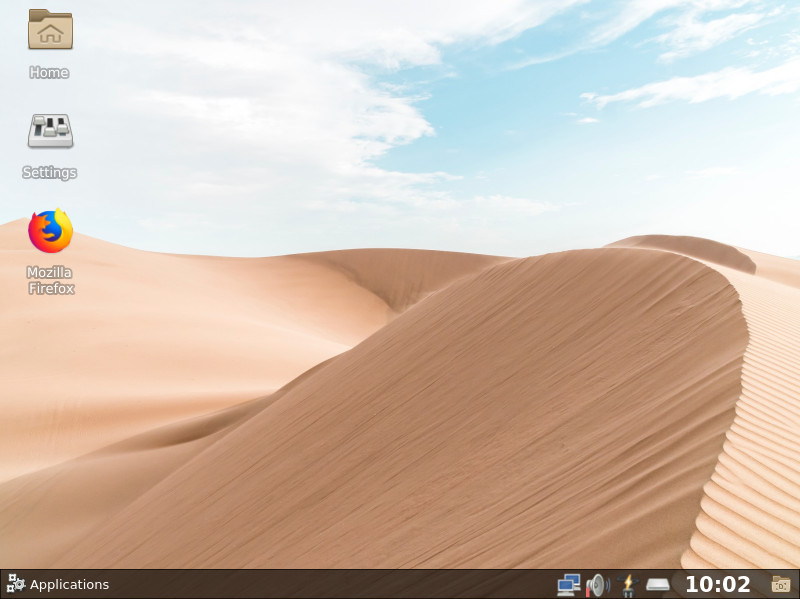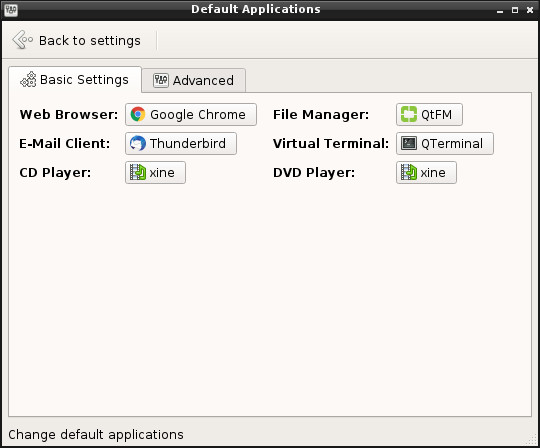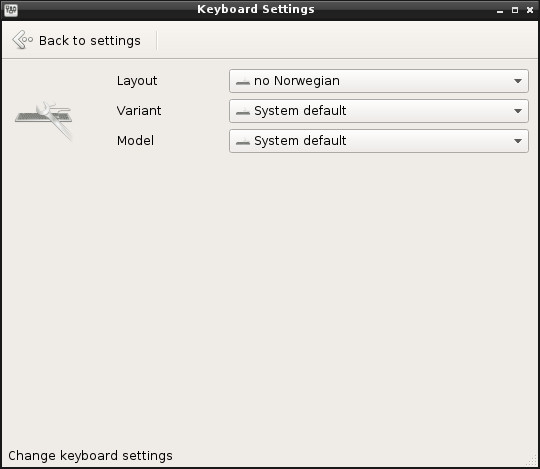
Draco Desktop Environment
Draco is a simple and lightweight desktop environment. While small still features XDG integration, freedesktop services and integration, power and storage management, desktop, panels, multi-monitor support and much more. Draco does not include any user applications.
Draco is developed for and on Slackware Linux, but is also compatible with RHEL/CentOS/Fedora and others. Draco is a fork of Lumina.
Features
TODO…
Desktop
TODO…
Panel
TODO…
Storage management
- Show available storage/optical devices in system tray
- Auto mount (and open) storage/optical devices when added (not default)
- Auto play CD/DVD (not default)
Power management
- Implements org.freedesktop.ScreenSaver service
- Implements org.freedesktop.PowerManagement service
- Automatically suspend on idle
- Automatically lock screen on idle
- Automatically hibernate or shutdown on critical battery
- Inhibit actions if external monitor(s) is connected
- Enables applications to inhibit display and suspend
- Display backlight support
- Display hotplug support
- RTC wake support
- Intel
pstate(Sandy Bridge+) support
Usage
TODO…
Default shortcuts
| Shortcut | Action |
|---|---|
Alt+F1 |
Default terminal |
Alt+F2 |
Application launcher |
Ctrl+Alt+Left |
Switch desktop/workspace |
Ctrl+Alt+Right |
Switch desktop/workspace |
Ctrl+Alt+Up |
Switch desktop/workspace |
Ctrl+Alt+Down |
Switch desktop/workspace |
Shift+Alt+Left |
Move window to desktop/workspace |
Shift+Alt+Right |
Move window to desktop/workspace |
Shift+Alt+Up |
Move window to desktop/workspace |
Shift+Alt+Down |
Move window to desktop/workspace |
Win+F1 |
Switch to desktop/workspace 1 |
Win+F2 |
Switch to desktop/workspace 2 |
Win+F3 |
Switch to desktop/workspace 3 |
Win+F4 |
Switch to desktop/workspace 4 |
Win+D |
Toggle show desktop |
Alt+Tab |
Next window |
Alt+Shift+Tab |
Previous window |
wheel/touchpad up/down on desktop |
Switch desktop/workspace |
Screen saver
Draco depends on XScreenSaver to handle the screen session, the default settings may need to be adjusted. You can launch the (XScreenSaver) configuration GUI with the xscreensaver-demo command or from settings.
Recommended settings are:
- Mode:
Blank Screen Only - Blank After:
5 minutes - Lock Screen After:
enabled + 0 minutes - Display Power Management:
enabled- Standby After:
0 minutes - Suspend After:
0 minutes - Off After:
0 minutes - Quick Power-off in Blank Only Mode:
enabled
- Standby After:
A custom configuration tool will be added in the future.
Hibernate
A swap partition (or file) is needed by the kernel to support hibernate/hybrid sleep. Edit the boot loader configuration and add the kernel option resume=<swap_partition/swap_file>, then save and restart.
Note that some distributions don’t require resume=, and some have hibernation disabled. Consult your distribution documentation regarding hibernation.
Components
Draco is divided into the following components:
- libDraco
- Common functions.
- start-draco
- Takes care of starting and running the desktop environment.
- draco-settings
- Manage settings.
- draco-settings-x11
- Manage monitors. You can use this component outside of Draco.
- org.dracolinux.Desktop
- The desktop session. Takes care of anything related to desktop, panels, clipboard and auto started applications/services. You can use this component outside of Draco.
- org.dracolinux.Power
- Takes care of anything related to power. This includes, but not limited to screensaver, freedesktop services, suspend, hibernate, monitors, backlight, keyboard, CPU. You can use this component outside of Draco.
- org.dracolinux.Powerd
- D-Bus system service for Draco. Used to modify backlight, cpufreq/pstate and RTC wake alarm.
- org.dracolinux.Storage
- Takes care of removable storage devices. You can use this component outside of Draco.
- org.dracolinux.XDG
xdg-openreplacement. Takes care of anything XDG related when running Draco. You can use this component outside of Draco.
Screenshots
Settings
Main settings:

Draco XDG/mime settings:

Applications and services that are launched during desktop startup:

Basic keyboard configuration:

Panels configuration:

Power configuration:

Wallpaper configuration:

General desktop configuration:

Monitor configuration:

Requirements
Build and runtime requirements.
cmake(>= 3.0)pkg-configQt(5.5+, latest LTS recommended)QtCoreQtDBusQtGuiQtWidgetsQtConcurrentQtX11Extras
X11libX11libXsslibXdamagelibXrandrlibXfixesxrandrsetxkbmapxinitxcbxcb-randrxcb-ewmhxcb-icccmxcb-imagexcb-compositexcb-damagexcb-utilxcb-shm
xscreensaverqt5ctxdg-utilsshared-mime-infohicolor-icon-themeadwaita-icon-theme(3.18 recommended)openboxUDisks2(or compatible service)UPower(>= 0.9.23 or compatible service)ConsoleKit/logind(or compatible service)
Recommended
Optional recommended applications.
qterminal(terminal emulator)qtfm(file manager)pnmixer(audio system tray)obconf(window manager config)nm-applet(network manager)
Build
Daemon notice
Draco includes a power daemon (to be able to adjust screen and cpu) this daemon must run as root (or a user with write access to /sys), this service run through D-Bus and can only be accessed by a predefined system group, this should be a common desktop user group like power or something similar. The default when building Draco is root as user and power as group. If you want something else you can change this during build.
Add the following during cmake configure:
-DPOWERD_SERVICE_USER=<run service as this user>
-DPOWERD_SERVICE_GROUP=<user group that have access to service>
You can also change the /etc/dbus-1/system.d/org.dracolinux.Powerd.conf file manually if you want.
Slackware Linux (14.2+)
Install the following packages from SlackBuilds.org or slackware.com/~alien:
- qt5 (5.9.7+/5.12.x recommended)
- qt5ct
- openbox
The rest should be available in a standard installation.
A draco.SlackBuild is available.
You can of course build it manually:
mkdir build && cd build
cmake -DCMAKE_INSTALL_PREFIX=/usr -DCMAKE_INSTALL_LIBDIR=lib64 -DCMAKE_INSTALL_MANDIR=/usr/man -DCMAKE_INSTALL_DOCDIR=/usr/doc -DCMAKE_BUILD_TYPE=Release ..
make
sudo make install
Note that the install prefix should be the same folder as D-Bus (usually in /usr), else you will need to copy the Draco service files to the proper location manually.
Ubuntu (Xenial+)
Minimal testing is done on Ubuntu, some features may not work.
Known issues:
- Add your user to the
powergroup before running Draco (add group if not exists). - Hibernate does not work, will add instructions on fixing this
Dependencies (based on a miminal install of Xenial):
sudo apt-get install build-essential cmake pkg-config openbox adwaita-icon-theme-full xscreensaver xdg-utils qt5ct qtbase5-dev libqt5x11extras5-dev libx11-dev libxss-dev libxdamage-dev libxrandr-dev libxfixes-dev libxcb1-dev libx11-xcb-dev libxcb-randr0-dev libxcb-ewmh-dev libxcb-icccm4-dev libxcb-image0-dev libxcb-composite0-dev libxcb-damage0-dev libxcb-util0-dev libxcb-shm0-dev
Build and install:
mkdir build && cd build
cmake -DCMAKE_INSTALL_PREFIX=/usr -DCMAKE_INSTALL_LIBDIR=lib64 -DCMAKE_INSTALL_LIBEXECDIR=bin -DCMAKE_BUILD_TYPE=Release ..
make
sudo make install
Note that the install prefix should be the same folder as D-Bus (usually in /usr), else you will need to copy the Draco service files to the proper location manually.
RHEL/CentOS/Fedora
Minimal testing is done, some features may not work.
Known issues:
- Same as Ubuntu
- Adwaita icons are broken, expect missing icons
See RPM spec file for build instructions.
License
This project has source files licensed under BSD-3, LGPL-2.1 and GPL-2.

